Zurich Travel Guide
Set beneath snow-clad peaks on the shores of a glittering lake, Zurich is known for its typical Swiss neatness, scenic beauty and wealth, which resides in areas such Bahnhofstrasse, one of the most beautiful, expensive and exclusive shopping avenues in Europe, and a couple of metres below its streets, where unimaginable treasures lie in underground vaults. Though widely regarded as the world's banking capital, Zurich is also the city that gave birth to the avant-garde Dadaist movement, and where James Joyce wrote Ulysses. Its Museum of Fine Arts houses one of Europe's most extensive collections, which ranges from 15th century religious iconography to the modern art works of Dali, Arp, Hockney, Cezanne, Monet, Gaugin, Munch and Picasso.
Visitors can spend days exploring cobbled streets, wandering through museums, exploring flea markets or walking away with free gifts from chocolate factories. The quays, with their promenades, are made for walking, especially along the shores of the lake. Zurich has an active restaurant and cafe culture that's ideal for people-watching, and a lively, multi-ethnic population to rival any other major European city. The exacting order of the Swiss, with their passion for neatness and precision, may create an impression of a rather prim and staid society, but visitors will discover quite the opposite when exploring Zurich's nightlife. With more bars, clubs and restaurants than you can shake a stick at, and a calendar packed full of street parades and festivals, a holiday in Zurich can exhaust even the most energetic party animal.
Best time to visit Zurich
The best time to travel to Zurich for a holiday is during the height of summer, in July and August, when the best weather is experienced. Spring and autumn are also good times to holiday in the city, but winter is cold, overcast and damp.
What to see in Zurich
-Marvel at modern architecture in the Museum of Design.
-Take in the panoramic views while riding the Polybahn and Rigiblick Funiculars.
-Bring along the kids for a trip to the Zurich Zoo.
-Explore the narrow, winding lanes of Niederdorf.
What to do in Zurich
-Spend a few hours exploring the fascinating Swiss National Museum.
-Marvel at the spires of the beautiful Fraumunster Church.
-Soak up some high culture at the Kunsthaus Zurich (Fine Arts Museum).
-Stroll alongside the Limmat River to visit the Centre Le Corbusier.
Beyond Zurich
As a hub for railways, roads, and air traffic to both Switzerland and Europe in general, the city's importance as a base for travelling in and around the region is well recognised, and it often serves as the entry point for foreign tourists. From Zurich travellers have easy access to the Swiss Alps, as well as the other major city of Geneva.
Getting there
Flights to Zurich land at Zurich Airport, situated in the Kluton district on the outskirts of Zurich, a short ride to the city centre.
Did you know?
-The St. Peter church in Zurich has the largest clock face in Europe.
-Visitors will have the choice of 1,200 different fountains in the city to take their photograph.
-Albert Einstein attended the University of Zurich, where he later became professor.
Things to do in Zurich
Zurich is full to the brim with attractions and sightseeing opportunities for travellers, who can visit wonderful monuments, museums and churches, and wander through the cobblestone streets of Niederhof and enjoy a light meal or cup of coffee while being entertained by the street performers and buskers. Culture vultures will love the Swiss National Museum, the Fine Arts Museum and the Museum of Design Zurich, and children of all ages will love the Zurich Zoo, where endangered species such as snow leopards and red pandas can be seen. Visitors keen on doing a lot of sightseeing in Zurich should purchase the Zurich Card, which includes access to transport services of Zurich Public Transport and offers free admission to over 40 museums, reduced admission to the zoo, a complimentary welcome drink in over 20 restaurants and a number of other benefits. The card can cover a period 24 hours or 72 hours.
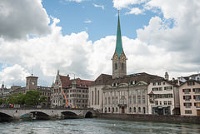
Fraumunster Church
Of the church spires that characterise Zurich's skyline, the thin blue spire of Fraumunster is the most graceful. Overlooking the historic old square of Munsterhof, the former pig market, the church was founded in 853 and its convent inhabited by German noblewomen until the 13th century. Important architectural features include the Romanesque choir and the enormous elaborate organ, but its chief attractions are the five beautiful stained-glass windows designed by Marc Chagall in 1970.
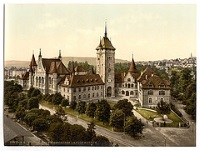
Swiss National Museum
A fascinating exploration of Swiss national history, the Swiss National Museum has an impressive and varied collection of ancient artefacts, providing visitors with a richer understanding of Swiss life and consciousness through the centuries. Housed in an exquisite castle-like building, with a distinctive tower, the permanent collection contains a comprehensive anthology of artefacts from the Stone Age to modern times. First stop is the archaeology exhibit where tools and articles dating back to before 800BC are on display. Highlights at the museum include the Celestial globe of Jost Bürg (1594), a groundbreaking symbol of European thought, religious reliquaries from the 13th to 16th centuries and ancient wheels, considered to be among the earliest ever found. Another major drawcard is the Armoury, where historic Swiss weaponry used in combat between 800 and 1800BC can be found. Visitors can expect to see crossbows, swords and suits of armour.
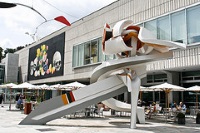
Kunsthaus Zurich (Fine Arts Museum)
Devoted for the most part to 19th and 20th century artwork, the Kunsthaus Zurich (Zurich Fine Arts Museum) is a cultural drawcard for any art lover. Holding one of the largest collections of works by Edvard Munch outside Norway, as well as works by renowned modern artists such as Chagall, Picasso, Monet, Rothko and the Expressionists, Kokoschka, Beckmann and Corinth to name a few, there is a whole host of quality artwork at which the visitor can marvel. Visitors can also view the creative talents of cutting edge Swiss artists such as the sculptor and painter Alberto Giacometti, and well-known Swiss duo Fischli and Weiss. Situated in a sophisticated building with contemporary exhibitions, a trip to the Kunsthaus Zurich makes for a very rewarding cultural day out.
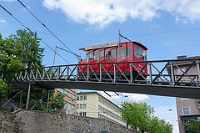
Polybahn and Rigiblick Funiculars
Trains, buses, trams and bikes are common ways of getting around Zurich. To get above the bustling streets and cobbled walkways, travellers should hop onto either the Polybahn or Rigiblick Funicular for panoramic views of the city and Lake Zurich. The traditional Polybahn was first opened in 1889 to solve the transport problem of students travelling from central Zurich to the University of Technology, which is situated on the towering Zürichberg hill. The Polybahn has maintained its classic Swiss appearance and continues to haul students and tourists to the Polyterasse viewpoint. Serving an attractive neighbourhood north of Zurich, the Rigiblick Funicular rewards travellers with a sweeping panoramic view of the city and the unmistakable Mount Rigi (1797m).
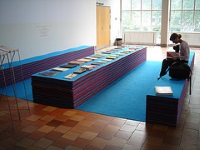
Museum of Design Zurich
Known for sophisticated designs such as the internationally recognised symbol of the Red Cross, it is no wonder that Switzerland has a museum dedicated solely to design. With four separate collections, visitors can indulge in the designs of the Poster Collection, Design Collection, Graphic Collection and Decorative Arts Collection, spanning the past century or visit one of the temporary exhibits where works of acclaimed industrial designers, photographers, graphic artists and architects are regularly shown. Designed by the progressive Swiss architects Adolf Steger and Karl Egender as a Functionalist manifesto, the Museum of Design Zurich is a great example of modern architecture in Switzerland and is a gallery not to be missed.
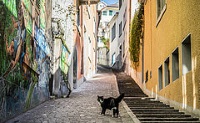
Niederdorf
Situated in the old town across from central station, the narrow lanes of Niederdorf wind through towering 14th century buildings revealing small plazas where restaurants spill onto cobbled streets and buskers entertain diners and passers-by with miscellaneous music. This charming district has an interesting array of fashion stores, bookshops and antique dealers, as well as superb independent cheese, wine and pastry shops. In the evening the area transforms into one of Zurich's buzzing nightlife venues, and there are a wide selection of bars, restaurants and clubs to be explored.

Zurich Zoo
Unlike the dubious reputation of zoos worldwide, the Zurich Zoo is refreshingly dedicated to nature conservation, maintaining ecosystems and protecting animal species, and runs many projects aimed at reintroducing animals into the wild. Offering guided tours and in depth information tools, the Zurich Zoo does its best to educate the public. With over 340 different species and 4000 animals, visitors will get the unique chance to view endangered animal species such as snow leopards and red pandas. Recreating ecosystems from exotic Madagascar to the rugged Ethiopian Highlands and housing the various animals in spacious enclosures, a visit to the diverse Zurich Zoo is a pleasurable and invigorating excursion. Travellers should visit the website to see feeding times and to discover whether new pups have been born.
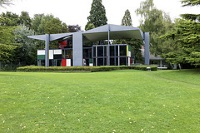
Pavillon Le Corbusier
The final work of the renowned Swiss architect who pioneered modernism and laid the foundation for Bauhaus, the Pavillon Le Corbusier in Zurichhorn Park is the epitome of modern design. A conglomeration of his life's work, the former Centre Le Corbusier and Heidi Weber Museum unify Le Corbusier's architecture, paintings, furniture, sculpture and writings, all in one space. Created in the 1960s, the contemporary building has strong references to Mondrian and is a jumble of cubic structures made of coloured panels, glass and steel, protected by a detached angular roof. Initially designed as a private house, the many spaces of the Centre Le Corbusier have fared well as an exhibition and learning centre. While travelling to this illuminating masterpiece, tourists can take a stroll alongside the Limmat River in picturesque Zurichhorn Park and should look out for the sculptures of Jean Tinguely and Henry Moore.
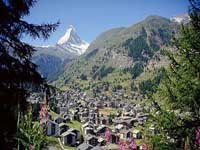
Swiss Alps
The tradition of skiing goes back two centuries in Switzerland and, today, with more than 1,700 mountain railways and ski lifts, renowned ski schools and instructors, the best ski equipment in the world, and outstanding slopes and facilities catering for all levels of ability, it deserves to be called 'Europe's winter playground'. The ideal resort for beginners or families is Grindelwald in the Jungfrau region, while intermediates and snowboarders should head for the twin resorts of Davos and Klosters, where there are miles of excellent ski terrain. Expert skiers can enjoy the challenge of 7,200 ft (2,700m) vertical drops on the Klein Matterhorn at Zermatt, and the ski valley of Verbier is ideal for shoulder-season skiing, as its location provides early snow that lingers late into the spring. Grindelwald has long been the capital of summer hiking in the Bernese Alps, and has a network of groomed trails for winter hikers.
Eating Out
Zurich boasts a plethora of eateries that cater to just about every nationality under the sun, including, of course, restaurants with strong French, German and Italian influences. Visitors should try the delicious traditional Christmas snack, Tirggel, which is a hard, thin and very sweet biscuit made from flour and honey. Zurcher Geschnetzeltes, a veal stew made with mushrooms, white wine and cream is a must while in Zurich, and visitors will notice potato Rosti is a popular local dish. Other famous exports not to be missed are, of course, the decadent and delicious Swiss chocolates as well as Swiss cheeses such as Emmental, Gruyere, Vacherin, and Appenzeller. Other famous Swiss culinary inventions include fondue and muesli. The left bank and right bank areas are where all the best restaurants can be found and it is customary to make reservations in advance. For special occasions, the restaurants at the top of the Uetliberg have fantastic views.
Shopping
While watches, cuckoo-clocks and chocolate may be the traditional purchases on a visit to Zurich, there are also many upmarket boutiques and speciality stores for luxury shoppers to play in. The main shopping street is Bahnhofstrasse, which is home to department stores Globus and Jelmoli, and jewellery shops such as Bucherer and Beyer, as well as fashion shops such as H&M. Fine Swiss chocolates (including Frey and Lindt), Swiss Army knives, embroidery, linen, Swiss watches, and handmade clocks are available from shops such as Schweizer Heimatwerk and Confiserie Sprungli. At Zurich Hauptbahnhof, Shopville is a subway shopping centre offering Swiss souvenirs and fine wines. The Niederdorf district has trendy boutiques, 'modern' antiques and a few bookshops. Nearby, Schipfe is a street where artisans and craftsman offer quality and custom-made products. Elegant boutiques, department stores and speciality shops are clustered in the Old Town. International visitors may reclaim VAT but some conditions do apply.
Nightlife
A good way to start an evening is to visit one of the open-air bars, where revellers can enjoy a relaxing drink before heading out to the trendy Zurich-West area. The former industrial zone is home to some of the city's hottest underground bars and nightclubs. Visitors should also check out the Old Town, as it has a range of upmarket lounges and hotel bars. Formerly Zurich's red-light district of Langstrasse, it's the place to go for an edgier night of biker bars and strip clubs.
Getting Around
Zurich is easy to navigate, as a modern, user-friendly network of trams and buses covers the city daily from 5.30am to midnight, with a more limited night service on weekends. Transport works on a zone system, and tickets are valid for one, two or 24 hours. Tickets are transferable but must be bought before boarding; they are also valid on some boats and local city trains. The most useful travel pass is the Tageskarte (one day ticket), as it allows travel on all buses and trams for 24 hours; however, tourists should use the ZurichCARD, which entitles the holder to unlimited free use of public transport. Travelling by taxi is expensive even by Swiss standards, but they are safe and convenient and can be hailed on the street, found at taxi ranks or ordered by phone; Uber and Lyft are also options. Getting around by car is not recommended due to congestion and expensive or scarce parking. From mid-April to mid-October, bicycles can be hired free from various stations. Walking is also a good option in the city centre.
Zurich Climate and Weather
The climate of Zurich is continental, and temperatures are modified by winds off the Atlantic Ocean. Winters are cold, while summers tend to be hot and sunny. In January, generally the coldest month, temperatures range between 14F (-10C) and 41F (5C), and in July, mid-summer, temperatures range between 59F (15C) and 86F (30C). The wettest time of year is the summer, between June and August.
Switzerland travel info
Electricity
Electrical current in Switzerland is 230 volts, 50Hz. Plugs are of the linear, rounded three-pin type, but rounded two-pin plugs will fit the outlet.
Language
The four official languages are Swiss German, French, Italian and Romansch. Most people know at least three languages, including English.
Money
The official currency is the Swiss franc (CHF), which is divided into 100 rappen (German) or centimes (French). Although not part of the EU, many prices are indicated in euros and some merchants may accept euros. Credit cards are widely accepted and ATMs are widespread; many are equipped with the Cirrus or Maestro system. Banks offer the best exchange rates, but it is also possible to exchange money at major hotels, main train stations and airports. Banks are open Monday to Friday.
Tipping
A 15 percent service charge is normally included in all hotel, taxi, bar and restaurant bills, and further tipping is not necessary.
Health
Swiss medical facilities and health care are among the best in the world, but are very expensive, meaning health insurance is recommended. As of January 2021, most people cannot use a UK-issued European Health Insurance Card (EHIC) or a Global Health Insurance Card (GHIC) to get medical treatment in Switzerland. Everyone 16 years of age and older should get fully vaccinated for COVID-19 before travel.
Safety
Switzerland has a low crime rate compared to other European countries and is generally a safe country to travel in. However, there has been a recent increase in petty theft and visitors should be alert to pickpockets and thieves, particularly in the city centres and on public transport. Travellers should be aware of robberies on overnight trains.
Local customs
Privacy and discretion are highly valued in Swiss culture, and strangers generally do not speak to each other. The Swiss are naturally reserved and conservative, and prefer structured rules to govern their daily lives. Littering is a serious social crime in Switzerland, and visitors should also make an effort to throw their recyclables in the proper receptacle. French and German-speaking Switzerland have different customs in some areas. When being introduced to someone, German-speaking Swiss will shake hands, while French-speaking locals may kiss on the cheek three times (generally left, right, left). Though many Swiss speak English, it is considered polite to inquire before attempting conversation.
Doing business
The Swiss business world reflects the local mastery at building well-oiled machines. Efficiency and organisation are prioritised, and the business culture is based predominantly on merit. The country's formal, no-nonsense approach to business offers little room for humour or lack of preparation in meetings and, though the Swiss are slightly less pedantic than their German or French counterparts, they attach great value to appearance and punctuality.
Dress codes for business people in Switzerland are quite formal and conservative, particularly in the banking sector, where dark suits are the norm. Business and pleasure are entirely separate in the Swiss work environment. In keeping work and personal compartmentalised, Swiss businesspeople even shy away from calling their colleagues by first names, which reinforces formality and boundaries between work and play. When invited to a Swiss business associate's home, a small gift such as flowers or a box of chocolates is appropriate.
In Swiss business culture those in senior positions garner a great deal of respect, but decision-making processes are often quite democratic. Switzerland is home to over 1000 multinationals and has become something of a melting pot of business customs, regional influences and etiquette. English is the corporate language, particularly for multinationals. However, regional languages, such as French, German and Italian, are sometimes preferred in their respective areas. Swiss-German business meetings are rarely over food and are often as brief as possible, with little small talk. By contrast, Swiss-French and Swiss-Italians often meet over lunches and talk is not restricted to business. Handshakes are common for addressing both men and women. Business hours are from 8am to 5pm on weekdays with a lunch break from 12pm to 2pm.
Duty free
Travellers to Switzerland over 17 years do not have to pay duty on 200 cigarettes or 50 cigars or 250g tobacco; 2 litres alcohol up to 15 percent and 1 litre alcohol over 15 percent. The maximum allowance of wine is 20 litres, but duty will be payable on this quantity. VAT is liable if the total value of all goods exceeds CHF 300. Restricted items include meat and meat products from selected countries. Prohibited items are absinth and anaesthetics.
Communications
The international country dialling code for Switzerland is +41. Travellers can purchase local prepaid SIM cards for unlocked phones, and WiFi is widespread.
Passport & Visa
The borderless region known as the Schengen area includes the following countries: Austria, Belgium, Czech Republic, Denmark, Estonia, Finland, France, Germany, Greece, Hungary, Iceland, Italy, Latvia, Liechtenstein, Lithuania, Luxembourg, Malta, The Netherlands, Norway, Poland, Portugal, Slovakia, Slovenia, Spain, Sweden, and as of December 2008, Switzerland. All these countries issue a standard Schengen visa that has a multiple entry option that allows the holder to travel freely within the borders of all. It is highly recommended that travellers' passports have at least six months' validity remaining after the intended date of departure from their travel destination. Immigration officials often apply different rules to those stated by travel agents and official sources.
Entry requirements
US passport holders require a passport valid for three months beyond period of intended stay. A visa is not necessary for stays of up to 90 days within a 180 day period.
United Kingdom citizens require a passport valid for at least three months beyond period of intended stay, with the exception of passports marked 'British Citizen', 'British Subject' (containing a Certificate of Entitlement to the Right of Abode issued by the United Kingdom), and 'British Overseas Territories Citizen' issued by Gibraltar, which will be accepted if valid on arrival.
No visa is required for passports endorsed 'British Citizen', 'British Overseas Territories Citizen' issued by Gibraltar, Identity Cards issued by Gibraltar, and 'British Subject' (containing a Certificate of Entitlement to the Right of Abode issued by the United Kingdom). All other British nationals are entitled to a maximum stay of 90 days without a visa, within a 180 day period.
Canadian passport holders require a passport valid for three months beyond period of intended stay. A visa is not necessary for stays of up to 90 days within a 180 day period.
Australian passport holders require a passport valid for three months beyond period of intended stay. A visa is not necessary for stays of up to 90 days within a 180 day period.
South African passport holders require a passport valid for three months beyond period of intended stay, and a Schengen visa.
Irish nationals require a valid passport, valid for the period of the intended stay, but no visa is necessary.
New Zealand nationals require a passport valid for three months beyond period of intended stay. No visa is necessary for a stay of up to 90 days within a 180 day period.
Useful contacts
Swiss Tourist Office, Zurich: +41 44 215 4000 or www.myswitzerland.com
112 (General), 117 (Police), 144 (Ambulance).Embassies / consulates in other countries
Swiss Embassy, Washington DC, United States: +1 202 745 7900.
Swiss Embassy, London, United Kingdom: +44 20 7616 6000.
Swiss Embassy, Ottawa, Canada: +1 613 235 1837.
Swiss Embassy, Canberra, Australia: +61 2 6162 8400.
Swiss Embassy, Pretoria, South Africa: +27 12 452 0660.
Swiss Embassy, Dublin, Ireland: +353 1 218 6382.
Swiss Embassy, Wellington, New Zealand: +64 4 472 1593.
Embassies / consulates in Switzerland
United States Embassy, Bern: +4131 357 7011.
British Embassy, Bern: +41 31 359 7700.
Canadian Embassy, Bern: +41 31 357 3200.
Australian Consulate-General, Geneva: +41 22 799 9100.
South African Embassy, Bern: +41 31 350 1313.
Irish Embassy, Bern: +41 31 352 1442.
New Zealand Consulate-General, Geneva: +41 22 929 0350.



